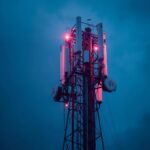

Accurate and detailed drawings are essential for any successful telecom project. Whether it’s a Fiber optic rollout or a wireless tower installation, engineering drawings guide each step, from planning to final handover. Of all the drawing types, Construction Drawings and As-Built Drawings are the most important, but they are often misunderstood.
Though they may seem almost identical, these drawings serve distinct purposes at different phases of a telecom project. Understanding their differences ensures clear communication, efficient execution, and reliable network performance.
1. What Are Construction Drawings?
Construction Drawings (CDs) are official design documents prepared before construction begins. They represent the designer’s intent, showing how the project should be built according to technical standards, design guidelines, and project specifications.
These drawings are created during the design phase and issued to the construction team, contractors, and stakeholders. They serve as a roadmap for implementing telecom infrastructure such as Fiber routes, duct networks, handholes, manholes, and towers.
A good construction drawing includes:
* Detailed layout plans, showing proposed routes and equipment locations.
* Dimensions, elevations, and cross-sections for accuracy.
* Notes on materials, installation standards, and construction methods.
* Design compliance with telecom standards and local regulations.
Example:
In a Fiber-to-the-Home (FTTH) project, construction drawings show the proposed path of the Fiber cable, splitter locations, and duct connectivity across the network. Field teams rely on these drawings to execute the design as planned.
In short, Construction Drawings guide the build. They show the field crew exactly what needs to be done and where.
You may also like: “Why Smart Wireless Network Design Is the Backbone of Modern Connectivity”
2. What Are As-Built Drawings?
Once the project is constructed, there is often a gap between what was designed and what was built on-site. That’s where As-Built Drawings (ABDs) come in.
As-Built Drawings are the final, updated version of the construction drawings that reflect all modifications made during the actual installation process. These changes may occur due to site conditions, utility conflicts, design adjustments, or unforeseen field constraints.
An As-Built Drawing shows the real-world installation, capturing the final condition of the telecom network exactly as it exists on site.
Key elements of As-Built Drawings include:
* Accurate field measurements and deviations from the original design.
* Updated routes, equipment positions, and structural details.
* Notes about rerouted ducts, relocated cabinets, or changed material types.
* Verification data from GPS or survey coordinates for precise documentation.
Example:
During a Fiber network deployment, a duct route might be shifted a few meters to avoid an existing utility or obstacle. The As-Built Drawing will document this new alignment accurately, ensuring the final record matches the actual installation.
As-Built Drawings are vital for maintenance teams, network expansion, and regulatory compliance, as they serve as the permanent reference record of the built infrastructure.
3. Construction Drawings vs As-Built Drawings
Aspect | Construction Drawings | As-Built Drawings |
Project Phase | Created before construction | Prepared after construction completion |
Purpose | To guide field teams during installation | To record the actual built condition |
Data Source | Based on design intent and standards | Based on field verification and survey data |
Accuracy Level | Theoretical or proposed | Real and verified |
Users | Designers, contractors, site engineers | Operators, maintenance teams, clients |
4. Importance of Both in Telecom Projects
In telecom infrastructure design, both drawing types are equally critical. Construction Drawings set the stage for execution, while As-Built Drawings validate and document what’s achieved.
a. Improved Project Coordination
Construction Drawings make sure that everyone involved, from design engineers to contractors, uses the same technical reference. This helps reduce confusion, rework, and delays.
b. Compliance and Quality Assurance
Telecom projects must adhere to strict design and safety standards. Construction Drawings provide the design intent, and As-Built Drawings confirm that these standards were maintained during implementation.
c. Maintenance and Future Planning
As-Built Drawings are invaluable for network maintenance and future upgrades. They help engineers identify existing routes, prevent damage to underground assets, and plan new expansions without conflicts.
d. Asset Management and Record Keeping
For operators and network owners, As-Built Drawings serve as a verified record of assets. This documentation supports regulatory approvals, warranty claims, and audits.
5. Why Accuracy Matters in Telecom Design
Telecom networks rely on precision. Even small deviations in fiber lengths, tower locations, or duct routes can affect signal performance and service reliability. Having both accurate Construction Drawings and verified As-Built Drawings ensures that:
* Network capacity aligns with design expectations.
* Field issues are traceable and easier to resolve.
* Long-term operations remain efficient and cost-effective.
Accurate As-Built documentation also simplifies GIS mapping, asset digitization, and integration with smart network management systems.
6. How ASE Structure Design Delivers Accuracy
At ASE Structure Design Pvt Ltd, we understand that every telecom project depends on reliable documentation. Our experienced CAD design team provides end-to-end drafting support, from Construction Drawings to As-Built documentation, tailored for:
- Fiber optic network design (FTTH, FTTx, backbone)
- Wireless and tower infrastructure layouts
- EV charging stations and BIM integration
With a focus on quality, precision, and global telecom standards, we help our clients build networks that are efficient, compliant, and future-ready.
Conclusion
In telecom infrastructure, both Construction Drawings and As-Built Drawings play indispensable roles. The first guides the field team through what needs to be built, while the latter documents what’s actually built. Together, they ensure clarity, accountability, and network reliability.
Accurate documentation isn’t just about design — it’s about building confidence in every connection.
That’s the commitment we deliver at ASE Structure Design Pvt Ltd — turning telecom designs into dependable, real-world networks.
Latest News



